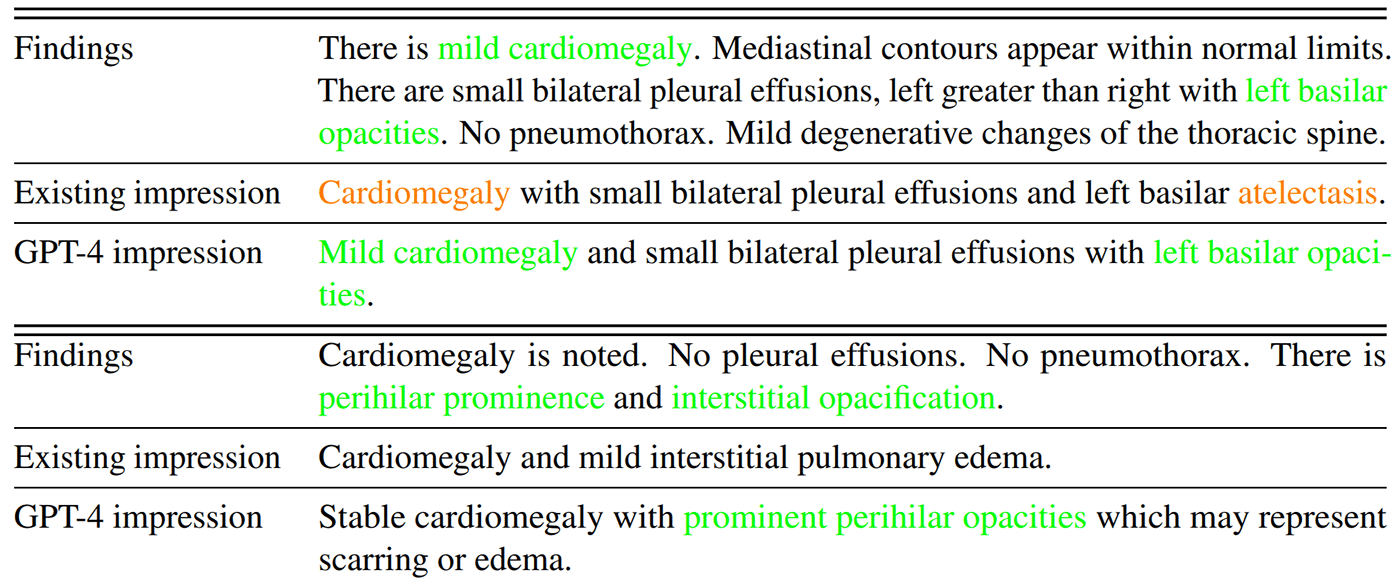Revolutionizing Radiology: GPT-4's Role in Advancing AI-Assisted Imaging
The integration of Artificial Intelligence (AI) into radiology marks a significant milestone in medical technology, with GPT-4 emerging as a key player. This advanced AI model, known for its exceptional language understanding and generation capabilities, is now stepping into the realm of radiological image interpretation. In this article, we'll explore the groundbreaking study by Microsoft on GPT-4's application in radiology, analyze its potential to enhance diagnostic accuracy, and discuss the challenges that lie ahead in this AI-driven transformation of medical imaging. Join us as we unravel how GPT-4 is not just a technological advancement, but a beacon of hope for the future of healthcare diagnostics.
As AI continues to revolutionize various industries, its incursion into healthcare, particularly in radiology, is a development that cannot be overlooked. The capability of GPT-4, a model known for its proficiency in text-based tasks, to interpret complex medical images, marks a significant leap forward. This evolution signals a new era where AI not only assists but also enhances human expertise in medical diagnoses. The implications of this are profound, offering a glimpse into a future where AI and human expertise converge for more accurate, efficient, and accessible healthcare solutions.
GPT-4 in Radiology: A Microsoft Study Insight
The groundbreaking study by Microsoft on GPT-4's application in radiology showcases the potential of this advanced AI model in the field of medical imaging. Not only did GPT-4 display a remarkable ability to accurately classify diseases, but it also excelled in summarizing radiological reports, often rivaling the expertise of seasoned radiologists. This capability signifies a leap forward in diagnostic efficiency and accuracy.
Key highlights include:
- Disease Classification: GPT-4's high accuracy in identifying various diseases.
- Report Summarization: Its capability to summarize complex radiological reports, sometimes better than human radiologists.
- Standardization of Reports: The ability of GPT-4 to bring consistency and reduce errors in radiological reporting.


Moreover, the study highlighted GPT-4's role in standardizing radiological reports. By bringing consistency to the varied styles and terminologies used in radiology, GPT-4 can potentially reduce ambiguities and errors in diagnoses. This aspect is crucial in enhancing the quality of patient care and improving the overall efficiency of diagnostic processes.
These insights from Microsoft's research suggest a transformative future for healthcare, where AI like GPT-4 not only assists in medical diagnostics but also refines and improves these processes. The integration of such AI technology could lead to a more efficient healthcare system, where AI and human expertise work in tandem to enhance patient outcomes, offering a promising glimpse into the future of radiological practices.
Balancing Perspectives: Assessing GPT-4’s Limitations
While the Microsoft study highlights the potential of GPT-4 in radiology, understanding its limitations is crucial. The study "Assessing GPT-4 Multimodal Performance in Radiological Image Analysis" provides insights into these challenges:
- Accuracy in Anatomical Region Identification: GPT-4 showed a 69.2% accuracy in identifying anatomical regions, indicating room for improvement in image recognition capabilities.
- Variability Across Modalities: The effectiveness of GPT-4 varied across different radiological images, suggesting the need for specialized training in specific modalities.
- The Importance of Human Oversight: The findings emphasize the necessity of human oversight in AI-assisted radiology.
These limitations highlight the need for continuous development of AI models in radiology. This section explores the implications of integrating AI tools like GPT-4 responsibly into radiological practices.
The Future of AI in Radiological Diagnostics
The integration of AI in radiology, especially GPT-4, heralds a transformative era in medical imaging:
- Augmenting Human Expertise: AI's potential to enhance radiologists' capabilities suggests improved diagnostics and patient outcomes.
- Advancements in AI Technology: Continuous AI advancements indicate future tools for complex diagnostic challenges.
- Impact on Healthcare Systems: AI integration could streamline healthcare, offering efficiency and broader access to quality diagnostics, particularly in underserved areas.
- Ethical and Practical Considerations: Addressing ethical concerns, data privacy, AI bias, and maintaining human judgment in healthcare is essential.
This section delves into these aspects, outlining AI's potential to revolutionize radiological diagnostics while highlighting the importance of responsible implementation.
Integrating AI into Current Radiology Practices
The integration of AI in radiology involves:
- Collaborative Approach: Essential collaboration between AI developers, radiologists, and healthcare institutions for practical AI application in radiology.
- Training and Adaptation: Training for radiologists and medical staff to use AI tools effectively, understanding their strengths and limitations.
- Regulatory and Ethical Frameworks: Establishing frameworks to guide safe AI use, addressing data privacy, and adherence to medical standards.
- Patient Engagement and Transparency: Engaging patients in understanding AI's role in their care and maintaining transparency in medical decision-making.
This section discusses responsible AI integration, enhancing rather than replacing human expertise in patient care.
Conclusion
In conclusion, the integration of AI technologies like GPT-4 in radiology represents a significant leap forward for medical diagnostics. This technology promises to augment human expertise, streamline healthcare processes, and improve patient outcomes. However, it's crucial to approach this integration with a balanced perspective, acknowledging the current limitations and ethical considerations of AI in healthcare. The future of radiology with AI is bright, but it requires careful and responsible development, ensuring that these advanced tools are used in a way that truly benefits patients and the medical community. This journey towards AI-augmented radiology is an exciting and transformative one, holding the promise of a more efficient, accurate, and accessible healthcare system.
References
- "GPT-4's Potential in Shaping the Future of Radiology" - Microsoft Research Blog. Read More
- "Assessing GPT-4 Multimodal Performance in Radiological Image Analysis" - Study on GPT-4's radiology interpretation capabilities. Access Study
